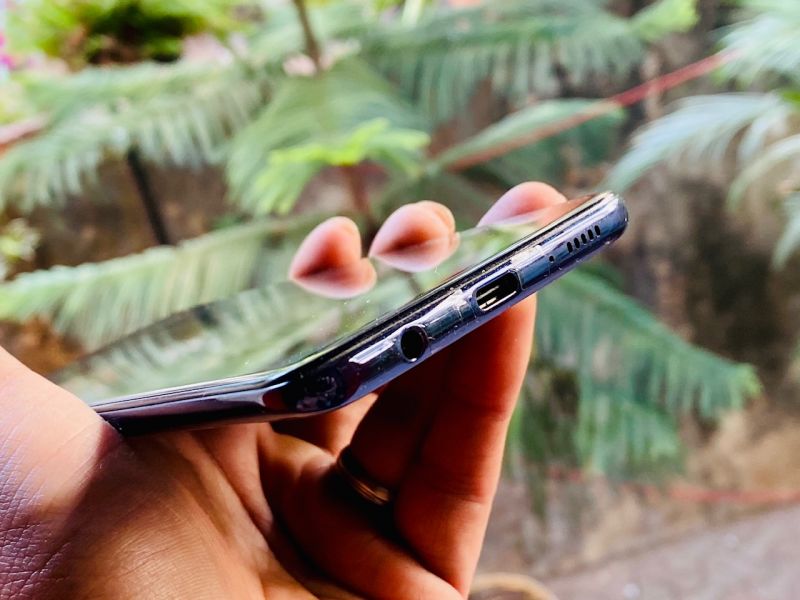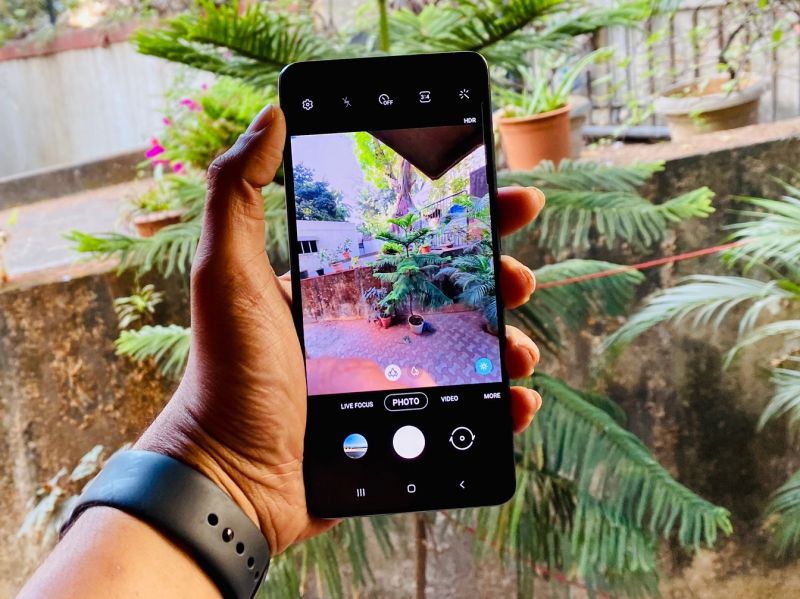Samsung Galaxy A51 review: Early contender for best midrange smartphone!

2019 was a landmark year for Samsung and not only did the South Korean smartphone giant introduce the world to its clean and streamlined One UI but it also doubled-down and revamped the faltering A Series. Unlike previous years, every model from the A-Series that was introduced had a clear distinction. Each handset was targeted at a specific audience and Samsung, in the process, showed the world what it is to understand its audience.
Sure, Chinese brands ruled and seldom could brands compete with their aggressive pricing. However, as the latest CounterPoint research shows, Samsung was the only non-Chinese brand to feature in the top 5 when it came to handsets moved in the country and also held the lofty position of being the number 2 brand in India.
With the freshly revamped A Series, Samsung has thrown down the gauntlet to every other brand competing in the premium mid-range segment and issued a rallying cry for every forthcoming model from this series. This takes us to the Samsung Galaxy A50, a smartphone that did extremely well not just in India but across the globe. Now, with 2020 already upon us in a big way, Samsung has recently launched the successor to the Galaxy A50 which has been aptly christened as the A51. This model not only builds up where Samsung left off but also features enough of new and relevant tech that should keep it futureproof well into the next year. And for good measure, Samsung has also dropped the price of the handset making it more accessible to the masses.

Design, Build
The Samsung Galaxy A50 did well last year because Samsung designed it to perfection. Sure, it did not have a glass finish like some of its pricier counterparts; but, the plastic frame and back added a lightweight appeal which was certainly a crowd-pleaser. The Galaxy A51 follows in the same footsteps and it is in a word — a stunner.
The Samsung Galaxy A51 comes with a beautiful large display that adorns the front and a hard-to-miss prism design on the rear. Elaborating to an extent on the display, Samsung appears to have moved on for good on the Infinity-U notched design and for good measure added an Infinity-O punch-hole cut-out that was first seen on the Galaxy Note 10 line-up. With the addition of this cut-out, Samsung has managed to trim the top bezel down quite significantly allowing for a streamlined look which we absolutely loved on the Note 10.
In a bid to keep the price down, Samsung has made use of a polycarbonate rear that features a design that looks like glass. Although made of plastic, the Galaxy A51 does in no way feel inferior to the touch; however, it comes with a gloss finish that retains fingerprint residue. We would have preferred if Samsung made use of a non-gloss finish that’s found on recent realme handsets as it helps in preserving the look even without a case. For what it’s worth, Samsung has also thrown in a case to keep your purchase in pristine condition way past its purchase date. Handling of the phone is made simpler due to the slight curvature on the rear; allowing it to fit comfortably in the hand.

The biggest design change here is the new L-shaped camera module on the rear that sits in the upper left corner. The power button and volume rockers sit on the right side of the display and its positioning is perfect and extremely accessible during single-hand usage. However, those with smaller hands may find it a bit difficult to access. Pressing and holding the power button will launch Samsung’s voice assistant Bixby; however, it can be mapped in the Advance features option in the Settings app.
On the bottom, we find the USB Type-C port that can be used for charging and data transfer and as a nod to audiophiles out there, Samsung has also added a 3.5mm headphone jack. This means that with it, you can use all your third-party wired headphones easily.

To sum up this section, the Samsung Galaxy A51 is a beautiful handset that’s well built and even though it has an overall plastic build, it doesn’t feel anything less than premium. So, big ups to Samsung for finishing it with perfection. A special mention has to be given to the rear design and even though it features a gradient design, it is subtle and not overbearing as some of the models from rival brands in the last year.
Display
The Galaxy A50 was a forward-thinking handset for Samsung and with the A51, the brand has built upon it. It comes with an Infinity-O Super AMOLED display measuring 6.5-inches which is a minor size difference when compared with the 6.4-inches found on its predecessor. Due to the centrally-aligned camera cut-out, Samsung has managed to significantly reduce the bezels; however, there is no edge-to-edge display like some of the higher-end models. Samsung uses a flat panel display on the Galaxy A51 which is a fresh departure from the curved screens found on some of the more recent models. If you are worried about scratching this Corning Gorilla Glass 3 display, Samsung has also preinstalled a screen protector for good measure. Also, on the A51, Samsung has managed to reduce the width of the chin, which was a major pain point of the A50.

The display used here is FHD+ with a resolution of 1080 x 2400 pixels and features a 20:9 ratio. Samsung is one of the best display manufacturers in the world and this is evident with what’s used on the Galaxy A51. While it doesn’t have the crisp density as seen on the likes of the Note 10+, for example, it is still a really good OLED panel that more than certainly gets the job done. The viewing angles here are superb and along with the brightness, colours are well represented.
On the Galaxy A51, Samsung has used an optical in-display fingerprint sensor. While it may not be as fast as a physical fingerprint scanner, it gets the job done. The Galaxy A50’s in-display fingerprint scanner struggled a bit and it’s great to see that Samsung has worked on this feature. However, for it to work at its optimum best, you need to place your finger directly over the indicated area and it should unlock within 1 – 1.5 seconds. This may not be that fast; however, it works a lot better than the early iterations of this tech.

Software
This is one area where the Samsung Galaxy A51 comes into its own. Samsung has loaded One UI 2.0 on top of Android 10 and the Galaxy A51 is the first device to come with this operating system preinstalled. Usually, the Galaxy S Series would be the first to feature Samsung’s newest OS; but this year we see the company’s bullish intent with its A-Series handsets and it will get additional support for two forthcoming major Android updates.



To put it simply, Samsung’s One UI 2.0 is like an almost non-existent skin on top of Android 10 but also has the intuitiveness and visually appealing design that the brand is striving for since last year. This version of One UI is a lot more comfortable than the previous generation and you can easily make out all the benefits Samsung has baked into it.



With Android 10, you receive Google’s navigation gestures, heightened parental controls, the detailed privacy and location additions as well as Focus mode. Also, you get the all-new Bixby Routines, Bixby voice, Edge screen and app pairs. Unfortunately, you also miss out on useful features such as the in-built screen-recorder and slow-mo selfie videos. There are also enhancements such as an enhanced Dark Mode, Secure Folder, Game Launcher, Dual Messenger feature and more.
Performance
The Samsung Galaxy A51 doesn’t make a significant leap when it comes to raw processing power over the A50 as it utilizes the very same chipset, the Exynos 9611, that’s found on the Galaxy A50s. This is an octa-core processor that’s based on a 10nm design which offers slightly better performance over the Exynos 9610 SoC found on the Galaxy A50.

For the price on offer, this chipset is quite sufficient and when paired with a 6GB RAM, the handset does well in handling whatever we threw at it. Made up of four 2.3GHz Cortez A73 cores, the handset can pull off any high-end games such as PUBG Mobile, Asphalt 9 or Call of Duty at its highest setting with complete ease.
When it comes to benchmarks, in the Geekbench 5 tool, the Galaxy A51 produced a single-core score of 341 points and a multi-core score of 1263 points. In AnTuTu, the handset scored 140756 points while in the PCMark tool, it scored 5613 points. This performance is what’s expected from a handset priced in this segment and although we noticed some extremely slight stutter during the testing period, for the most part, it fared very well.



As far as media playback goes, the bottom-firing speaker performs averagely. There isn’t anything spectacular to write home about; but for what it’s worth, Samsung has fitted Dolby Atmos here which helps enhance the audio quality a bit for wired or Bluetooth devices.
Camera
If there was a single reason to make the switch to the Galaxy A51 it would without a doubt be for its cameras. Last year, Samsung upgraded the Galaxy A50s with a 48MP camera which was one of the handset’s biggest draws. This year, the Galaxy A51 retains that very trait and builds upon it with some fantastic hardware.
The Galaxy A51 is fitted with a 48MP primary sensor with a decent f/2.0 aperture and an ultra-wide 12MP sensor with an f/2.2 aperture and an impressive 123-degree field of view. The handset also plays home to a 5MP f/2.2 depth sensor and it also has the honour of being the first Samsung smartphone with a 5MP f/2.4 macro lens.

To start off, the 48MP camera doesn’t capture images at 48MP; instead, it works on a technology that’s termed as pixel binning to output images at 12MP. What this means is that images appear with an accurate exposure as well as with significant details as it combines four pixels into one. When images are captured using binned pixels, you get some near stellar colour reproduction with a lot of details as opposed to images that are shot at 48MP. Low light images are also better formulated under this process and we see a marked improvement when compared with the previous generation Galaxy A50.





 Ultra-wide-angle
Ultra-wide-angle

 Macro at a distance of 3cm
Macro at a distance of 3cm

Samsung has worked on the ultra-wide angle camera here as well and after a strong showing in 2019, the Galaxy A51 is a testament to the brand’s hard work. The higher megapixel count found on the A51 does have some effect on the captured images as there is a bit more crispness to images.
The 5MP macro sensor is the handset’s biggest selling point and we feel that a lot of you will start capturing a lot of beautiful images with the A51. The resultant images are detailed close-ups of subjects that are nearly impossible to get without a dedicated lens. Once again, Samsung has done well in this department too; however, the only issue we found here was the lack of an optical image stabilizer so to get the best possible images, you would need a tripod or an extremely steady hand.
Upfront, Samsung has employed a 32MP selfie camera that does a wonderful job of capturing portrait shots. While taking self-portraits we noticed that there was a lot of detail and sharpness; but colour accuracy appears a bit off due to overexposure.
Overall, the cameras are the single most important reason why we recommend upgrading to the Galaxy A51.

Battery
Samsung has once again used a 4000mAh battery here and also fitted it with 15W fast-charging support. This is the same technology used on the Galaxy A50s and the Galaxy A50 before it. While we would have hoped that Samsung would have introduced some improved fast-charging tech; it doesn’t get much complains from us as you can easily fully charge the device from 0 to 100 in about two hours. Also, Samsung promises talk-time up to 32-hours on 3G and up to 87-hours of audio playback which is pretty great.
Verdict
Priced at Rs 23,999 for the 6GB+128GB option, the Samsung Galaxy A51 is the front-runner for best premium mid-range smartphone of early 2020. With specifications to match and an extremely competitive price tag, the Galaxy A51 is a handset for anyone who wants a smartphone with above-average camera capabilities. Sure, there are handsets with higher camera specifications such as 64MP sensors; but they don’t compare to the software performance that Samsung has on offer. Also, with One UI 2.0, you get a healthy taste of an uncluttered operating system that’s not just easy on the eyes but also extremely intuitive. Lastly, with a gorgeous display in tow; you get bragging rights which few other vendors can offer. So, all-in-all, the Samsung Galaxy A51 is hands-down the smartphone to beat in the upcoming, over-crowded smartphone premium mid-range race.

